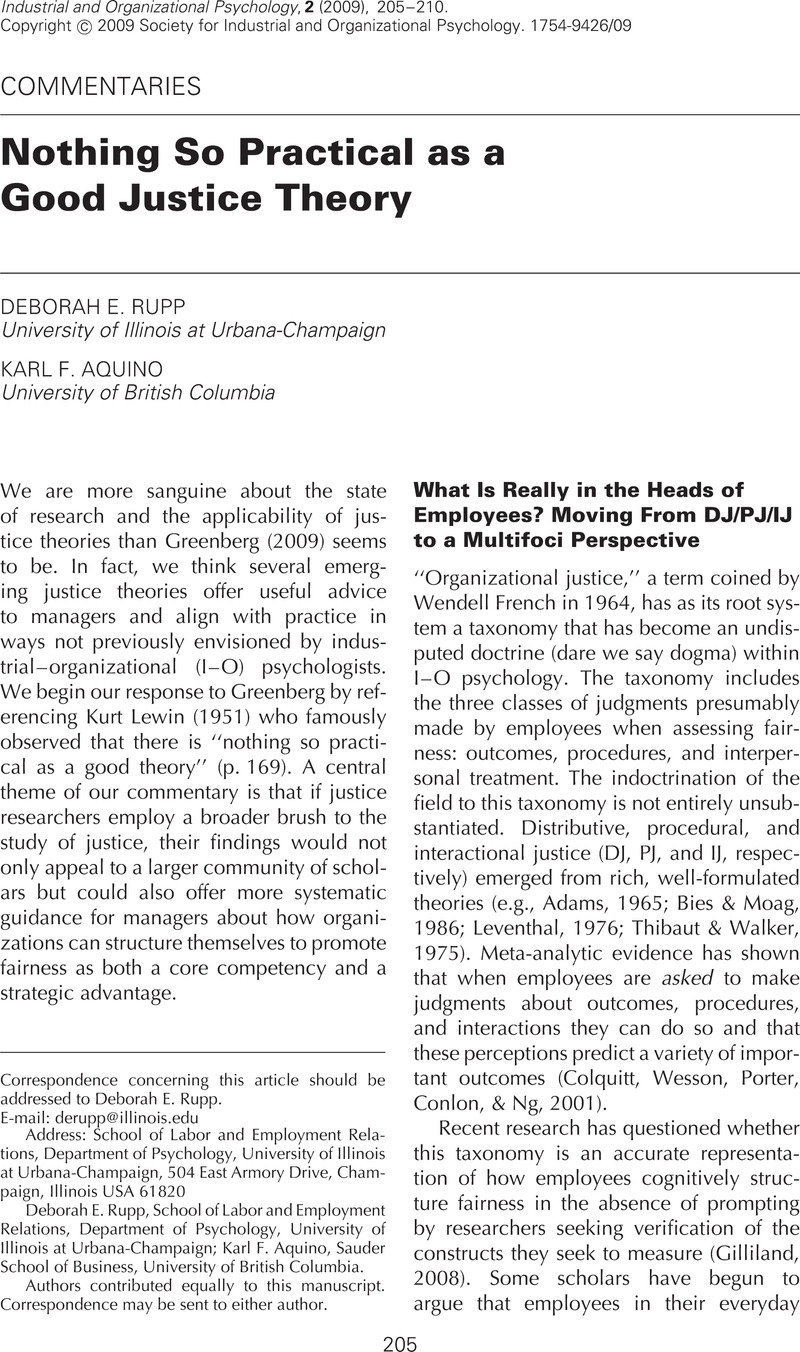Crossref Citations
This article has been cited by the following publications. This list is generated based on data provided by Crossref.
Greenberg, Jerald
2009.
Applying Organizational Justice: Questionable Claims and Promising Suggestions.
Industrial and Organizational Psychology,
Vol. 2,
Issue. 2,
p.
230.
Rupp, Deborah E.
and
Layne Paddock, E.
2010.
Fairness and Groups.
Vol. 13,
Issue. ,
p.
245.
E. Rupp, Deborah
2011.
An employee-centered model of organizational justice and social responsibility.
Organizational Psychology Review,
Vol. 1,
Issue. 1,
p.
72.
Curtis, Mary B.
Conover, Teresa L.
and
Chui, Lawrence C.
2012.
A Cross-Cultural Study of the Influence of Country of Origin, Justice, Power Distance, and Gender on Ethical Decision Making.
Journal of International Accounting Research,
Vol. 11,
Issue. 1,
p.
5.
Jones, Kristen P.
King, Eden B.
Nelson, Johnathan
Geller, David S.
and
Bowes‐Sperry, Lynn
2013.
Beyond the Business Case: An Ethical Perspective of Diversity Training.
Human Resource Management,
Vol. 52,
Issue. 1,
p.
55.
Rupp, Deborah E.
Shao, Ruodan
Jones, Kisha S.
and
Liao, Hui
2014.
The utility of a multifoci approach to the study of organizational justice: A meta-analytic investigation into the consideration of normative rules, moral accountability, bandwidth-fidelity, and social exchange.
Organizational Behavior and Human Decision Processes,
Vol. 123,
Issue. 2,
p.
159.
Uen, Jin Feng
Chen, Shu-Yuan
Chen, Hsien-Chun
and
Lin, Chih-Tang
2016.
The effect of employer’s moral obligation violation on survivor’s commitment.
Personnel Review,
Vol. 45,
Issue. 2,
p.
214.
Kim, Si Hyun
Laffranchini, Giacomo
and
Jeung, Wonho
2018.
Moderating effect of subordinates’ overall justice in the relationship between supervisors’ overall justice and supervisors’ affective organizational commitment.
Journal of Management Development,
Vol. 37,
Issue. 7,
p.
526.
Karam, Elizabeth P.
Hu, Jinyu
Davison, Robert B.
Juravich, Matthew
Nahrgang, Jennifer D.
Humphrey, Stephen E.
and
Scott DeRue, D.
2019.
Illuminating the ‘Face’ of Justice: A Meta‐Analytic Examination of Leadership and Organizational Justice.
Journal of Management Studies,
Vol. 56,
Issue. 1,
p.
134.
Adamovic, Mladen
2023.
Organizational justice research: A review, synthesis, and research agenda.
European Management Review,
Vol. 20,
Issue. 4,
p.
762.
Dodson, Samantha J.
Goodwin, Rachael D.
Graham, Jesse
and
Diekmann, Kristina A.
2023.
Moral Foundations, Himpathy, and Punishment Following Organizational Sexual Misconduct Allegations.
Organization Science,
Vol. 34,
Issue. 5,
p.
1938.



